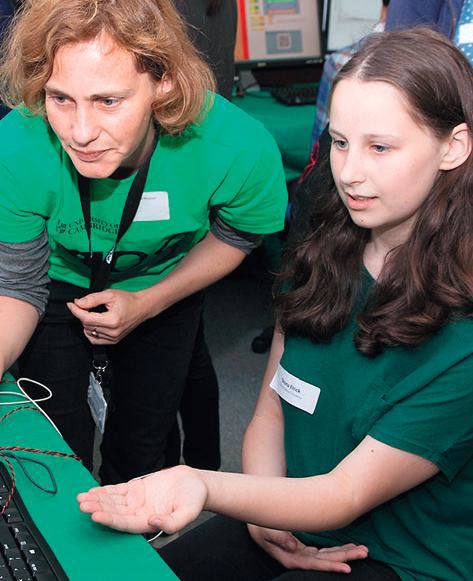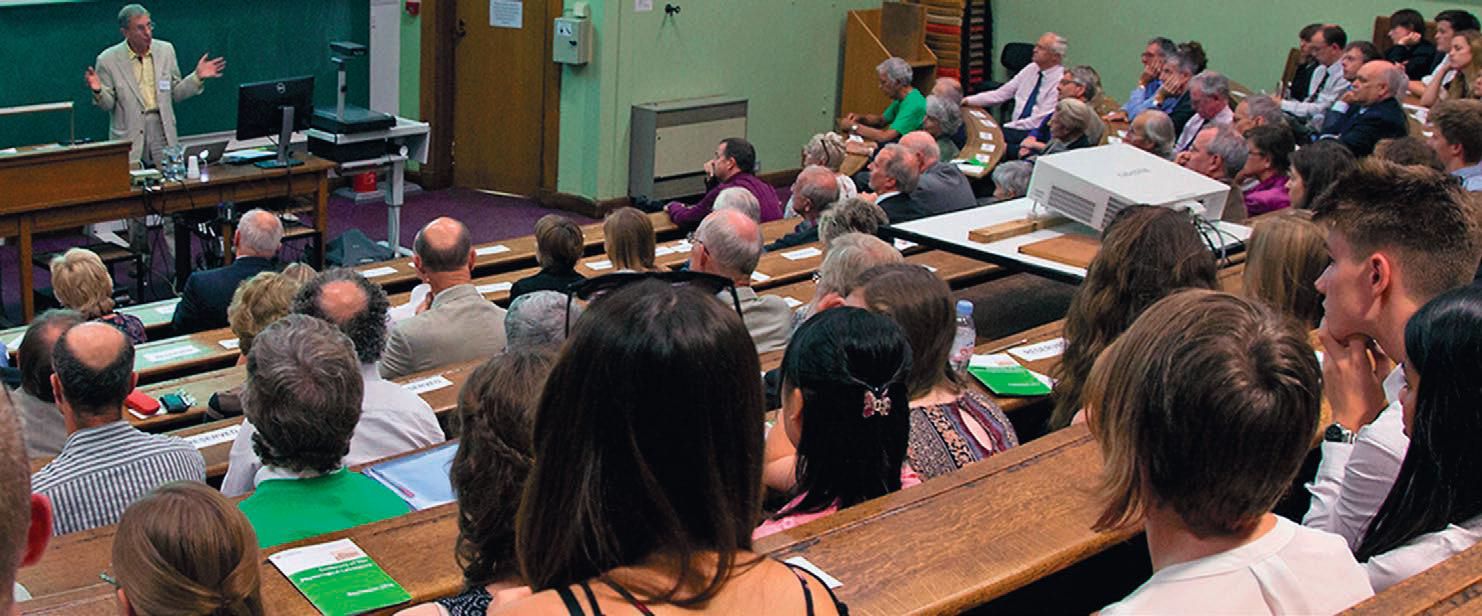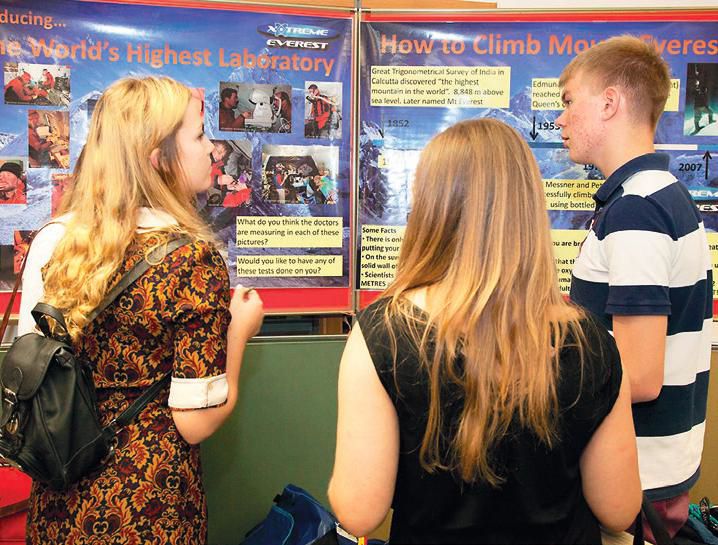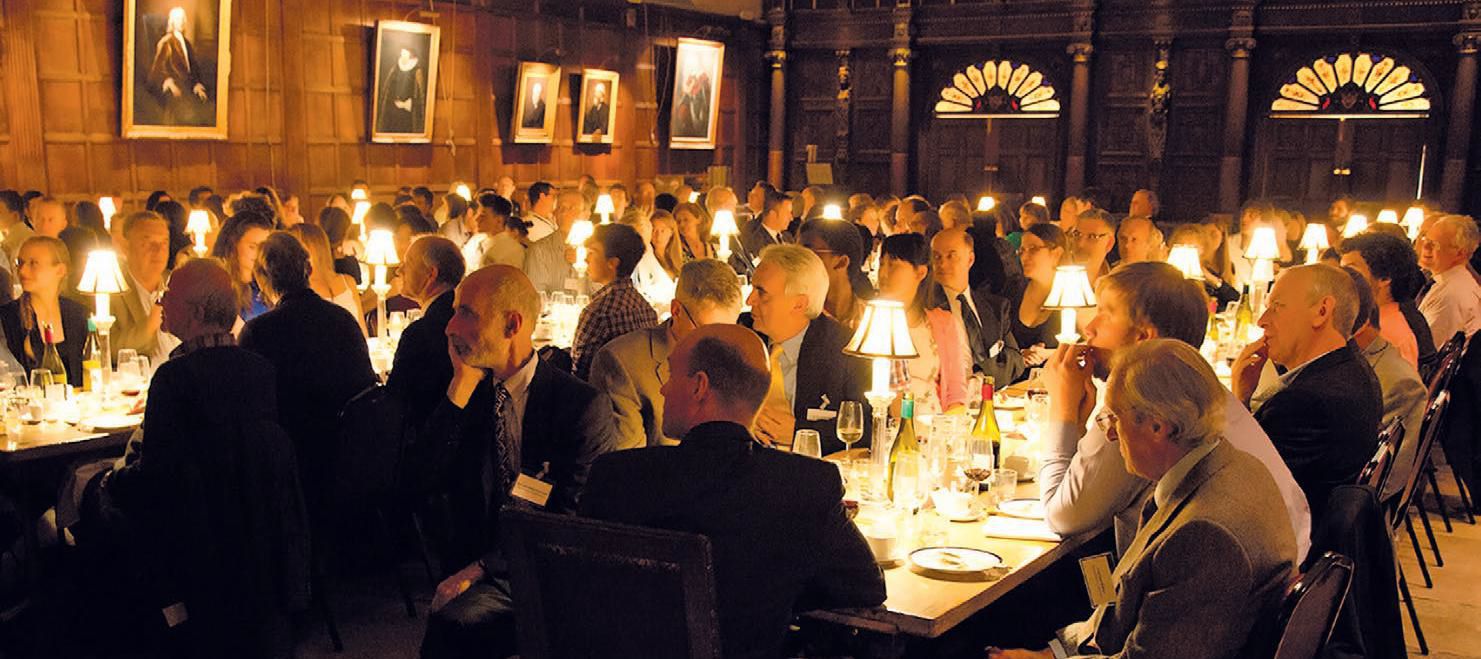
Physiology News Magazine
Cambridge physiology scores a century – 100 years of The Physiological Laboratory, University of Cambridge
News and Views
Cambridge physiology scores a century – 100 years of The Physiological Laboratory, University of Cambridge
News and Views
Sue Jones & Roger Keynes
Department of Physiology, Development & Neuroscience, University of Cambridge, UK
https://doi.org/10.36866/pn.97.10
Physiology took off in Cambridge when Michael Foster arrived there in 1870. He had a remarkable influence, inspiring students and co-founding both the Physiological Society and The Journal of Physiology. As his Cambridge School flourished, it needed to house an increasing number of talented students and young researchers, including future Nobel laureates AV Hill (1922), FG Hopkins (1929), CS Sherrington (1932), ED Adrian (1932) and HH Dale (1936). When two disused coal cellars had been pressed into service as labs, it was clear that a new building was urgently needed. The Worshipful Company of Drapers provided funding for a fine new home, designed under the careful eye of Foster’s protégé, John Newport Langley, and the Physiological Laboratory opened in full ceremony in 1914. One hundred years later, in September 2014, the Department of Physiology, Development and Neuroscience (PDN) hosted a series of events to celebrate the Centenary. Our aim was to give insight and inspiration to a wide audience about what physiology is, what it has achieved and contributed in the past, and what it continues to contribute today.
The opening event took place on 2 September 2014 with over a hundred invited guests: colleagues from across the University of Cambridge, including the Vice-Chancellor; physiologists from nearby Universities and from funding agencies, scientific journals and Societies; family members of our alumni; local Sixth Form students, and the Mayor of Cambridge. After a welcome from our Head of Department, Bill Harris, we heard from Roger Keynes about Foster’s inspirational teaching and Langley’s quest to understand all aspects of autonomic nervous system function, then from Andrew Murray about studies of high altitude physiology, pioneered by Sir Joseph Barcroft, continued by Sir Bryan Matthews, and still a strong area of research in the Department of PDN. Chris Huang reviewed the innovative work of past nerve and muscle physiologists, including AV Hill, Lord Adrian, Sir Alan Hodgkin and Sir Andrew Huxley. Chris also reminded us that Roger Tsien joined The Physiological Laboratory as a PhD student of Richard Adrian and then continued as a Research Fellow. Martin Johnson gave a moving account of the scientific, medical and social impact of Sir Robert Edwards’s research in the field of Reproductive Physiology. Guests then visited interactive displays, where demonstrations, real experiments and a range of physiological measurements were in action. Around 40 volunteers designed and ran the displays, including graduate students, postdocs, academic staff and support staff from PDN, and there was much-appreciated help from our colleagues at Anglia Ruskin University. Sir Colin Blakemore closed the afternoon’s events with a Centenary Lecture – a personal account of his experience as a young neurophysiologist in The Physiological Laboratory. Through his anecdotes and reminiscences we were reminded of further achievements in the one hundred year history of the building. Guests and volunteers then had the opportunity to mingle and ‘network’ at dinner in the Great Hall of Trinity College.
By all accounts the occasion was informative and enjoyable, and served as a positive reminder of the past and continuing importance of physiology. Our volunteers, in their distinctive green Centenary T-shirts, ran their interactive displays enthusiastically on three more afternoons in September for local GCSE students and interested members of the public. Further information about the Centenary events can be found at http://www.pdn.cam.ac.uk/centenary/index.shtml.
The events were supported by the Department of PDN, the Wellcome Trust Institutional Strategic Support Fund, The Physiological Society, Trinity College, Cambridge and St John’s College, Cambridge.

References
Langley JN (1883). The arrangement of the sympathetic nervous system, based chiefly on observations upon pilo-motor nerves. J Physiol 15, 176–248.
Barcroft J (1914). The Respiratory Functions of the Blood. Cambridge University Press.Matthews BHC (1945). Effects of high altitude on man. Br Med J 2, 75–78.
Hill AV (1910). The heat produced in contracture and muscular tone. J Physiol 40, 389–403.
Adrian ED (1926). The impulses produced by sensory nerve endings. J Physiol 61, 49–72.
Hodgkin AL & Huxley AF (I952). A quantitative description of membrane current and its application to conduction and excitation in nerve. J Physiol 117, 500–544.
Tsien RV (1981). A non-disruptive technique for loading calcium buffers and indicators into cells. Nature 290, 527–528.
Edwards RG, Bavister BD & Steptoe PC (1969). Early stages of fertilization in vitro of human oocytes matured in vitro. Nature 221, 632–635.




